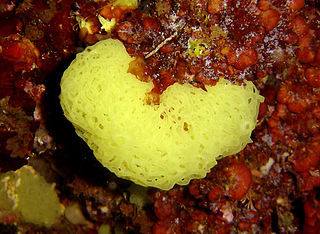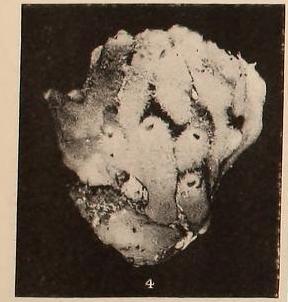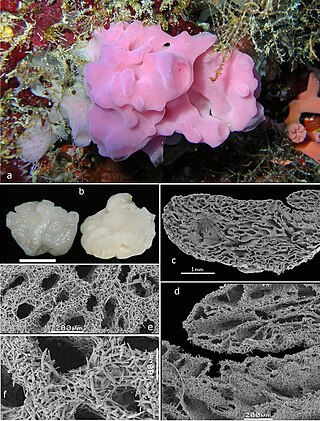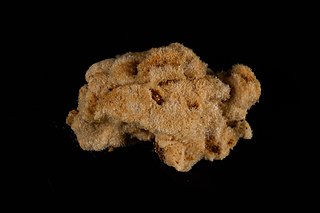
Cladorhiza is a genus of carnivorous sponges, comprising around 40 species found in oceans around the world. Cladorhiza is the type genus of the family Cladorhizidae.

Clathrina is a genus of calcareous sponge in the family Clathrinidae. Several species formerly in Clathrina were transferred to the newly erected genera Arturia, Ernstia, Borojevia, and Brattegardia in 2013. The name is derived from the Latin word "clathratus" meaning "latticed".
Leucopsila is a genus of poriferans in the family Baeriidae, was originally described as Leuconia stylifera in 1870. The genus was described by Dendy & Row in 1913.

Auletta is a genus of sponges in the family Bubaridae.

Arthur Dendy was an English zoologist known for his work on marine sponges and the terrestrial invertebrates of Victoria, Australia, notably including the "living fossil" Peripatus. He was in turn professor of zoology in New Zealand, in South Africa and finally at King's College London. He was a Fellow of the Royal Society.

Xestospongia is a genus of sponges in the family Petrosiidae. It contains the following species:

Arturia is a genus of calcareous sponge in the family Clathrinidae which contains 14 species. It is named after Arthur Dendy, a prominent researcher of calcareous sponges. It was renamed Arturia in 2017 because the name Arthuria was already assigned to a genus of molluscs.
Vetulina is a genus of sea sponges in the subclass Heteroscleromorpha. It is the only genus in the monotypic family Vetulinidae and the monotypic order Sphaerocladina.
Ascandra is a genus of calcareous sponges of the family Dendyidae and are found in oceans around the world.

Soleneiscus is a genus of calcareous sponges in the family Dendyidae.
Ascaltis is a genus of sponges in the family Leucascidae, first described in 1872 by Ernst Haeckel.
Ascaltis grisea is a species of sea sponge in the family Leucascidae, first described as Leucosolenia grisea by Arthur Dendy in 1891. It is known only from its type locality on the Houtman Albrolhos archipelago in Western Australia. It is a marine sessile filter-feeder.

Leucetta is a genus of sponges in the family Leucettidae, which was first described in 1872 by Ernst Haeckel. The type species is Leucetta primigenia Haeckel, 1872 by subsequent designation.
Vosmaeropsis is a genus of sponges in the family, Heteropiidae, and was first described in 1893 by Arthur Dendy. The type species by subsequent designation is Vosmaeropsis macera.

Vosmaeropsis mackinnoni is a species of calcareous sponge in the family Heteropiidae, and was first described in 1924 by Arthur Dendy and Leslie M. Frederick. It is known only from its type locality in the Abrolhos Islands, in Western Australia.

Leucascus is a genus of sponges belonging to the family Leucascidae.
Leucettusa lancifera is a species of calcareous sponge in the family Leucaltidae first described by Arthur Dendy in 1924, and found in New Zealand waters,.

Leucettusa tubulosa is a species of calcareous sponge in the family Leucaltidae first described by Arthur Dendy in 1924, and found in New Zealand waters,.
Robspongia is a genus of sponges belonging to the family Dendyidae, and the only species is Robspongia vociva.
Pericharax is a genus of sponges in the family Leucettidae, which was first described in 1883 by Poléjaeff.










